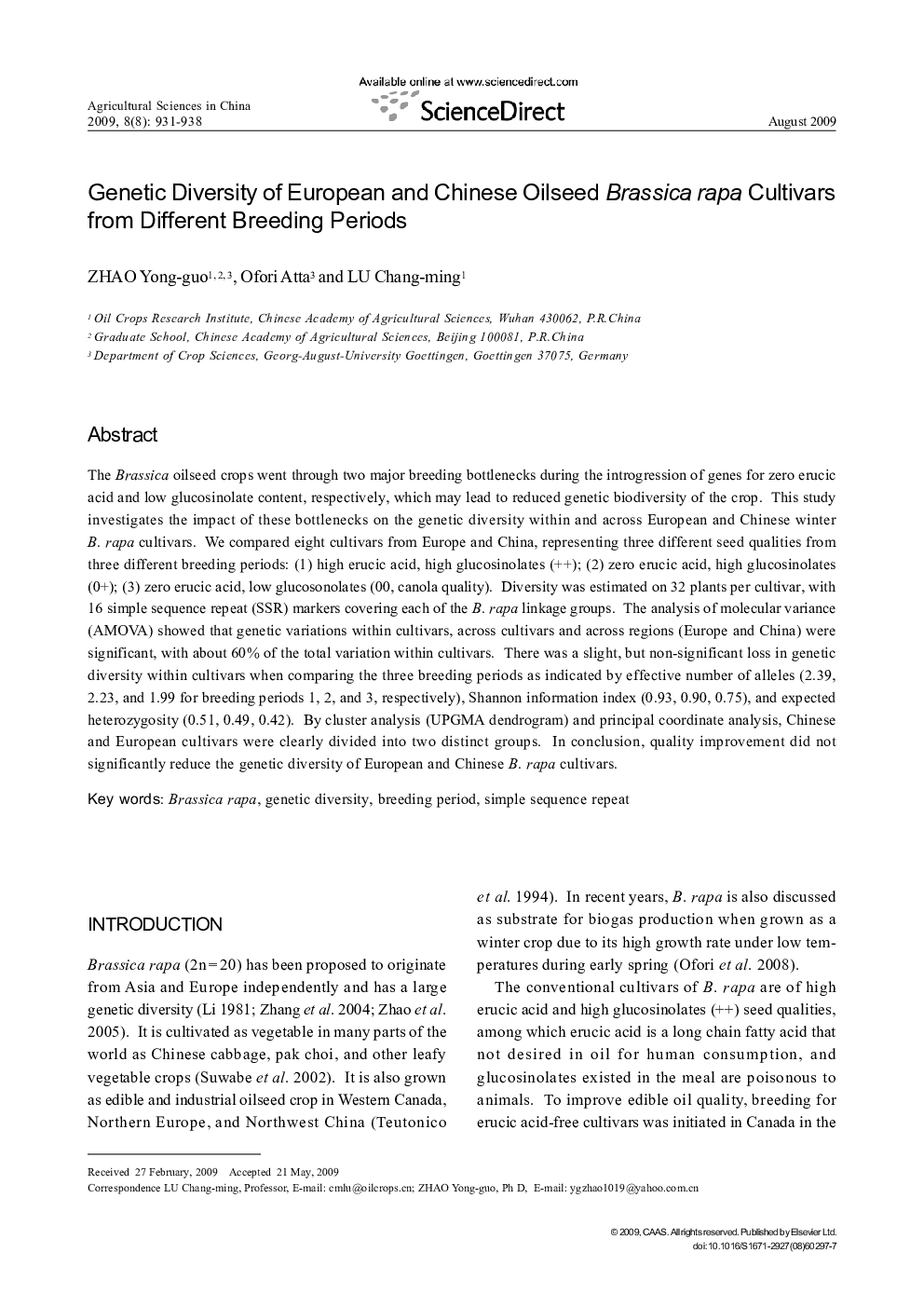| Article ID | Journal | Published Year | Pages | File Type |
|---|---|---|---|---|
| 4490328 | Agricultural Sciences in China | 2009 | 8 Pages |
The Brassica oilseed crops went through two major breeding bottlenecks during the introgression of genes for zero erucic acid and low glucosinolate content, respectively, which may lead to reduced genetic biodiversity of the crop. This study investigates the impact of these bottlenecks on the genetic diversity within and across European and Chinese winter B. rapa cultivars. We compared eight cultivars from Europe and China, representing three different seed qualities from three different breeding periods: (1) high erucic acid, high glucosinolates (++); (2) zero erucic acid, high glucosinolates (0+); (3) zero erucic acid, low glucosonolates (00, canola quality). Diversity was estimated on 32 plants per cultivar, with 16 simple sequence repeat (SSR) markers covering each of the B. rapa linkage groups. The analysis of molecular variance (AMOVA) showed that genetic variations within cultivars, across cultivars and across regions (Europe and China) were significant, with about 60% of the total variation within cultivars. There was a slight, but non-significant loss in genetic diversity within cultivars when comparing the three breeding periods as indicated by effective number of alleles (2.39, 2.23, and 1.99 for breeding periods 1, 2, and 3, respectively), Shannon information index (0.93, 0.90, 0.75), and expected heterozygosity (0.51, 0.49, 0.42). By cluster analysis (UPGMA dendrogram) and principal coordinate analysis, Chinese and European cultivars were clearly divided into two distinct groups. In conclusion, quality improvement did not significantly reduce the genetic diversity of European and Chinese B. rapa cultivars.
